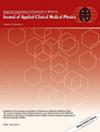A case study on SSD to SAD linear acceleartor calibration transition
Abstract
Purpose
Modifying calibration conditions of linear accelerators is infrequent and potentially a high-risk procedure. This study outlines a systematic approach used to transition a linear accelerator's calibration condition in an active clinical environment from source-to-surface (SSD) to source-to-axis (SAD), while maintaining treatment accuracy and avoiding interruption of clinical operations.
Methods
A satellite clinic within a university radiation oncology service operated an Elekta Versa HD linear accelerator with SSD calibration, while other system C-arm accelerators used SAD. With a single installation of the treatment planning system used across all sites, it was decided to convert the machine to SAD calibration. Representative plans with diverse delivery techniques were comprehensively evaluated in advance. Over a single weekend, beams were recommissioned in the treatment planning system (TPS), and output was adjusted per AAPM's TG-51 protocol. Monitor units (MUs) for on-treatment patients were scaled manually in the oncology information system, MOSAIQ. Quality assurance (QA) checks, as well as independent peer-reviewing of each field, were performed to ensure safety and quality for this high-risk procedure. A retrospective failure modes and effects analysis (FMEA) was subsequently conducted. To evaluate the clinical relevance and broader impact of this work, a targeted survey was conducted via the Wayne State MedPhysUSA LISTSERV.
Results
As a result of the change in output calibration condition, field MU required scaling, ranging from 2.7% to 6.4%. Patient-specific QA measurements demonstrated consistent gamma pass rates, and both solid-water phantom and external audit results verified machine output accuracy within 2%. No patient treatments were interrupted during the process. The FMEA identified insufficient expertise and staffing as the highest-risk failure mode. Survey results indicated that 80% of respondents had never personally performed a calibration transition with patients on treatment, and the majority of respondents characterized the procedure as extremely rare and of higher risk than standard TG-51 annual QA.
Conclusions
The absolute output calibration condition was successfully transitioned from SSD to SAD without interruptions of patient treatments. Multiple verification steps were implemented to ensure quality and safety. This project contributed to improved standardization across multiple sites of practice.


 求助内容:
求助内容: 应助结果提醒方式:
应助结果提醒方式:


